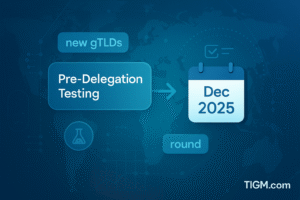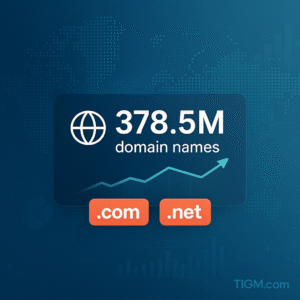Salesforce just became the biggest name yet to publicly commit to the next gTLD round — confirming plans to apply for a dot-brand TLD at ICANN 84.
The disclosure came from David Lawrence, Salesforce’s software engineering architect and IETF liaison on ICANN’s board, signaling serious intent from one of the world’s largest enterprise software companies.
A Major Signal for Round 2
Salesforce’s announcement matters because of scale. This isn’t a speculative application from a domain investor or a niche industry player — it’s a Fortune 500 company with over 70,000 employees and tens of millions of users worldwide.
Dot-brand applications require serious investment: $227,000 upfront to ICANN, annual registry fees around $26,000, and backend technical costs that can run six figures. Companies don’t commit to that without strategic rationale.
Salesforce joining the next round suggests other major brands are likely evaluating similar moves behind closed doors.
Why Brands Apply for gTLDs
Dot-brand TLDs give companies complete control over their namespace. Instead of relying on .com or .net, a company like Salesforce could operate login.salesforce, support.salesforce, or community.salesforce directly under their own TLD.
The benefits are practical: enhanced security (no third-party registrars involved), brand consistency across all digital properties, and protection against phishing or lookalike domains.
For companies operating at Salesforce’s scale, a dot-brand also simplifies URL management across global operations. Every property lives under one unified namespace, making it easier to enforce security policies, implement DNSSEC, and maintain HSTS across the entire domain tree.
It’s not just branding — it’s infrastructure control.
Round 1 Lessons
ICANN’s first new gTLD round in 2012 saw roughly 664 dot-brand applications out of 1,930 total applications — about 34% of the total pool.
Major brands like Google (.google), Amazon (.amazon), Microsoft (.microsoft), and Apple (.apple) all secured their TLDs. Some launched them for internal use, others for customer-facing services, and many simply locked them down as defensive registrations.
Round 1 also taught brands what not to do. Applications faced objections, string confusion disputes, and drawn-out legal challenges. Some brands walked away after sinking hundreds of thousands into applications that never launched.
ICANN has spent the past decade refining the process. The next round, opening in April 2026, promises clearer rules, faster evaluation timelines, and streamlined objection procedures.
What’s Different This Time
ICANN pre-approved Registry Service Providers for Round 2, eliminating one major bottleneck from the first round. Applicants can choose vetted backend operators upfront instead of navigating technical evaluations mid-process.
The Application Guidebook for Round 2 won’t drop until early 2026, but ICANN has published draft policies that indicate the core requirements will remain similar to Round 1.
Brands still need matching trademarks, can’t license second-level domains to external parties, and must operate under Specification 13 of the Registry Agreement — the addendum governing dot-brand operations.
The application window runs 12-15 weeks starting April 2026, giving companies a narrow timeframe to finalize applications.
Strategic Timing
Salesforce’s early disclosure gives the company a head start on public positioning. By confirming intent now, they signal to competitors, partners, and customers that they’re investing in long-term digital infrastructure.
It also puts pressure on other enterprise software giants. If Salesforce secures .salesforce, competitors may feel compelled to apply for their own TLDs to maintain digital parity.
This is how Round 1 played out — once a few major brands applied, others followed to avoid being left out of what could become a standard practice for Fortune 500 companies.
What Comes Next
ICANN 84 marked the first major public commitment from a Fortune 500 company for Round 2. Expect more announcements in the coming months as companies finalize their strategies.
For Salesforce, the path forward is clear: prepare the application, secure trademark documentation, select a backend provider, and submit when the window opens in April 2026.
If approved, .salesforce could be operational by late 2027 or early 2028 — giving Salesforce a decade of exclusive control over its corner of the internet.
Related reads : PIR’s .ORG Tax Return Shows New Identity Digital Backend Contract at About $1 per Domain








